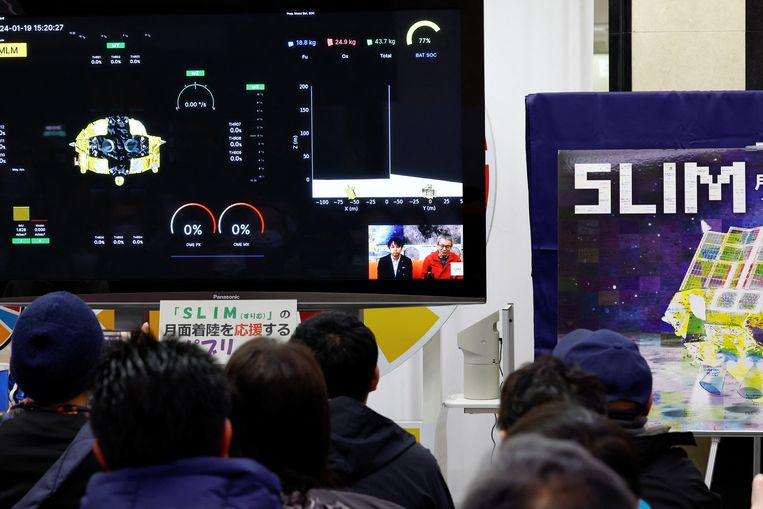Japan's SLIM (which stands for Smart Lander for Investigating Moon) spacecraft touched down on the moon's surface as planned at around 4:20 p.m. our time. This was confirmed by the Japanese space agency JAXA, which has now been able to contact the lunar lander. Earlier, communication and live broadcast were suddenly cut off, causing uncertainty about the lander's position on the moon's surface.
However, according to the Japan Aerospace Exploration Agency, the solar cells are not working properly yet, which is why the lunar lander is not generating electricity. The cause of this is being investigated. The spacecraft currently runs on battery power.
Japan is the fifth country to land a spacecraft on the moon, after the United States, the Soviet Union, China and India. This is the Japanese space agency JAXA's first mission to the lunar surface, although Japan has previously placed two satellites in orbit around the moon.
What distinguishes this lunar mission is that Japan calls it “One.” Moon sniper – The so-called “sniper on the moon” – because the spacecraft has the technology of landing more accurately, that is, up to 100 meters. Thanks to a kind of facial recognition, it should recognize craters on the moon or look for dangerous rocks on the surface. This way, the lunar lander determines where it is and can decide for itself whether to adapt or not.
“No country has succeeded in achieving this,” says the Japan Aerospace Exploration Agency. Until now, spacecraft have often landed tens of kilometers away from their originally intended location. If this technology succeeds, it will be an important breakthrough for landing on the moon in more difficult terrain in the future. Explorers do not necessarily have to go to flat areas without threats, but they can also visit hills and craters of the moon. There may be more water there, which is necessary for manned missions.
The portable instruments will map the formation of Shiuli Crater on the Moon. The research will include olivine, a mineral that may have been released from beneath the moon's crust during the impact that caused the crater. It also includes two small lunar rovers that move in unique ways: Lev-1, which moves by jumping, and Lev-2, which rolls and looks like an elongated baseball.

Japan launched the SLIM lander in September. The spacecraft has now been on its way from Earth for about 110 days. This means it takes a long time over a long route that requires much less fuel than the faster options other missions often choose.
Several lunar missions have failed recently, including Japan's. Over the past five years, attempts by Israel, India, Japan, Russia and the United States have failed. India achieved success with a new attempt last year, making it the fourth country to make a successful landing in space.
China has only managed to land a spacecraft on the moon several times in recent history, namely in 2009, 2013, 2019, and 2020. A fifth Chinese attempt is scheduled for later this year.
NASA also wants to go to the moon again, but recently postponed the crewed Artemis III mission to September 2026.

“Thinker. Coffeeaholic. Award-winning gamer. Web trailblazer. Pop culture scholar. Beer guru. Food specialist.”







More Stories
Comet Tsuchinshan-Atlas is ready to shine this fall
Sonos isn’t bringing back its old app after all
Indiana Jones and the Great Circle is coming to PS5 in spring 2025